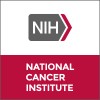
BL22 Immunotoxin In Treating Young Patients With Relapsed or Refractory Acute Lymphoblastic Leukemia...
LeukemiaLymphomaRATIONALE: BL22 immunotoxin can locate tumor cells and kill them without harming normal cells. BL22 immunotoxin may be effective in treating relapsed or refractory acute lymphoblastic leukemia and non-Hodgkin's lymphoma. PURPOSE: This phase I trial is studying the side effects and best dose of BL22 immunotoxin in treating young patients with relapsed or refractory acute lymphoblastic leukemia or non-Hodgkin's lymphoma.

211^At-BC8-B10 Before Donor Stem Cell Transplant in Treating Patients With High-Risk Acute Myeloid...
Acute Lymphoblastic LeukemiaAcute Myeloid Leukemia Arising From Previous Myelodysplastic Syndrome10 moreThis phase I/II trial studies the side effects and best dose of 211^astatine(At)-BC8-B10 before donor stem cell transplant in treating patients with high-risk acute myeloid leukemia, acute lymphoblastic leukemia, myelodysplastic syndrome, or mixed-phenotype acute leukemia. Radioactive substances, such as astatine-211, linked to monoclonal antibodies, such as BC8, can bind to cancer cells and give off radiation which may help kill cancer cells and have less of an effect on healthy cells before donor stem cell transplant.

HA-1 T TCR T Cell Immunotherapy for the Treatment of Patients With Relapsed or Refractory Acute...
Juvenile Myelomonocytic LeukemiaRecurrent Acute Biphenotypic Leukemia29 moreThis phase I trial studies the side effects and best dose of CD4+ and CD8+ HA-1 T cell receptor (TCR) (HA-1 T TCR) T cells in treating patients with acute leukemia that persists, has come back (recurrent) or does not respond to treatment (refractory) following donor stem cell transplant. T cell receptor is a special protein on T cells that helps them recognize proteins on other cells including leukemia. HA-1 is a protein that is present on the surface of some peoples' blood cells, including leukemia. HA-1 T cell immunotherapy enables genes to be added to the donor cells to make them recognize HA-1 markers on leukemia cells.

A Study to Compare Blinatumomab Alone to Blinatumomab With Nivolumab in Patients Diagnosed With...
Down SyndromeRecurrent B Acute Lymphoblastic LeukemiaThis phase II trial studies the effect of nivolumab in combination with blinatumomab compared to blinatumomab alone in treating patients with B-cell acute lymphoblastic leukemia (B-ALL) that has come back (relapsed). Down syndrome patients with relapsed B-ALL are included in this study. Blinatumomab is an antibody, which is a protein that identifies and targets specific molecules in the body. Blinatumomab searches for and attaches itself to the cancer cell. Once attached, an immune response occurs which may kill the cancer cell. Nivolumab is a medicine that may boost a patient's immune system. Giving nivolumab in combination with blinatumomab may cause the cancer to stop growing for a period of time, and for some patients, it may lessen the symptoms, such as pain, that are caused by the cancer.

Efficacy and Safety Evaluation of IBI188 in Combination With Demethylating Agents in Treatment of...
Acute Myeloid LeukemiaThe study is to evaluate safety, tolerability and composite CR of IBI188 plus Demethylating Agents in acute myeloid leukemia

Evaluation of Brain Changes in ALL Patients on Therapy
Acute LeukemiaThe study is aimed at assessing changes in the brain of patients from 6 to 18 years old with a diagnosis of acute lymphoblastic leukemia during chemotherapy.

CD34 Selected Allogeneic HCT w/ Myeloablative Conditioning Plus CD8+ Memory TCell Infusion in MDS,...
Acute Myeloid LeukemiaAcute Lymphoblastic Leukemia3 moreThis study will evaluate combining stem cells from the patient's matched sibling donor (a standard CD34-selected transplant) with a second infusion of white blood cells called "CD8 memory T-cells" from their sibling donor.

Daunorubicin and Cytarabine With or Without Uproleselan in Treating Older Adult Patients With Acute...
Acute Myeloid LeukemiaThis phase II/III trial studies how well daunorubicin and cytarabine with or without uproleselan works in treating older adult patients with acute myeloid leukemia receiving intensive induction chemotherapy. Drugs used in chemotherapy, such as daunorubicin and cytarabine, work in different ways to stop the growth of cancer cells, either by killing the cells, by stopping them from dividing, or by stopping them from spreading. Uproleselan may prevent cancer from returning or getting worse. Giving daunorubicin and cytarabine with uproleselan may work better in treating patients with acute myeloid leukemia compared to daunorubicin and cytarabine alone.

Inotuzumab Ozogamicin and Blinatumomab in Treating Patients With Newly Diagnosed, Recurrent, or...
B Acute Lymphoblastic LeukemiaPhiladelphia Chromosome Negative2 moreThis phase II trial studies how well inotuzumab ozogamicin and blinatumomab work in treating patients with CD22-positive B-lineage acute lymphoblastic leukemia that is newly diagnosed, has come back, or does not respond to treatment. Immunotherapy with monoclonal antibodies, such as inotuzumab ozogamicin and blinatumomab, may help the body's immune system attack the cancer, and may interfere with the ability of tumor cells to grow and spread.

Expression of Programmed Death-1 (PD-1) & Programmed Death Ligand-1 (PDL-1) in Acute Lymphoblastic...
Acute Lymphoblastic Leukemia in PediatricAcute lymphoblastic leukemia (ALL) is the most common childhood malignancy in the world. It is a malignant clonal proliferation of lymphoid progenitor cells, but most commonly of the B cell lineage (B ALL). . Acute Lymphoblastic Leukemia (ALL) is a heterogeneous disease that causes malignant hematological disorders at any age. It mainly affects children aged 2 to 5; in fact, 60% of pediatric leukemia cases are ALL, with an incidence of 3-4 cases per 100,000 per year. It is divided into two subtypes B-ALL and T-ALL depending on whether transformation occurs in B- or T-cell precursors, respectively . Leukemic cells apply multiple immune evasion mechanisms resulting in tumor progression. One of the most important immune escape mechanisms is over expression of immune checkpoint receptors and their ligands such as PD-1 and PD-L1 . The PD-1 receptor plays a crucial role in a broad spectrum of immune regulatory mechanisms . It is a negative co-receptor that down regulates T-cell activity . PDL 1, which is known as B7 H1 , is a cell surface protein of B7 family member . PD L1 is expressed on all types of lympho hematopoietic cells at variable levels and is constitutively expressed on T cells, B cells, macrophages, and dendritic cells . Tumors exploit the PD-1/PD-L1 pathway to evade host immune surveillance . PD-1/PD-L1 pathway controls the induction and maintenance of immune tolerance within the tumor microenvironment. The activity of PD-1 and its ligands PD-L1 or PD-L2 are responsible for T cell activation, proliferation, and cytotoxic secretion in cancer to produce anti-tumor immune responses .
